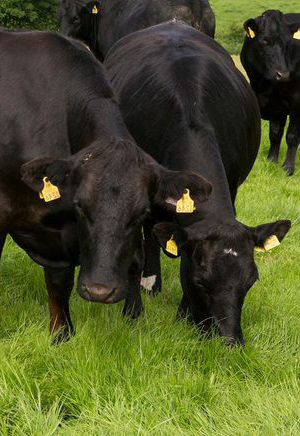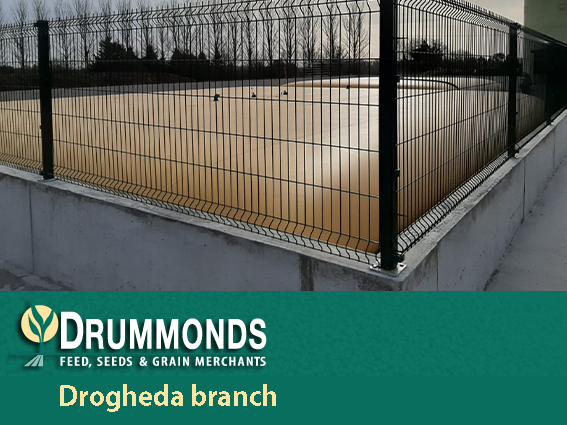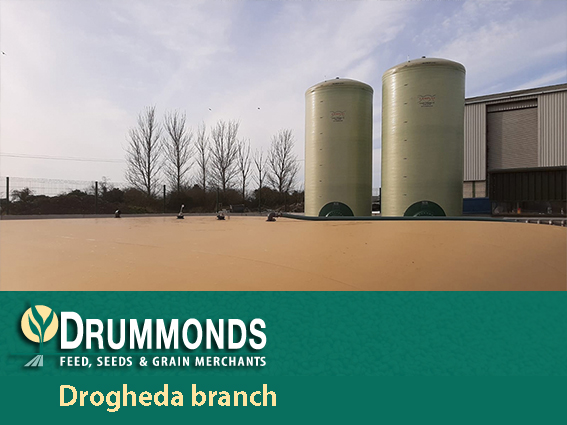We view Liquid Fertiliser as a key technology in our toolbox to not only enable our customers to improve their farm performance and profitability; but also to meet for the stricter regulations, in particular relating to chemical nitrogen (N), coming from both our own Government and Europe.
 Liquid Fertiliser has a role to play on both tillage farms and also intensive livestock farms. We combine nitrogen (N) and sulphur (S) to produce “N-Rich”, our top selling liquid fertiliser solution for tillage and grassland farms.
Liquid Fertiliser has a role to play on both tillage farms and also intensive livestock farms. We combine nitrogen (N) and sulphur (S) to produce “N-Rich”, our top selling liquid fertiliser solution for tillage and grassland farms.
Drummonds continues to invest in liquid fertiliser and has recently completed the installation of a bunded tank farm and blending plant at our Drogheda branch. This facility enables Drummonds to tailor make nutrition packages to match YOUR field and crop requirements.
We have a number of years experience with using Liquid Fertiliser in tillage crops under our belt; and it is only now, that we have the increased capacity, on the back of our recent investment, to promote Liquid Fertiliser on livestock farms. There is NO mystery to it; it is just granular nitogen (N) and sulphur (S) in a dissolved solution. Drawing from the
experiences in the UK, where liquid fertiliser accounts for almost 35% of the total fertiliser market, grassland farmers who have made the switch to liquid fertiliser claim they are growing more grass; have more consistent grass quality; and more even grass covers.
Why not try it on some of your grazing or silage ground this season, and see the benefits for yourself firsthand ?
Starting off, it is probably easier to use Liquid Fertiliser on your silage ground. If not for your first cut; then why not use for your second cut of silage ? Liquid Fertiliser may be sprayed immediately when grass is cut, and you can then follow on with slurry straight away. The slurry will help the applied Liquid Fertiliser to be taken up quicker by the grass roots leading to a far quicker recovery. Liquid Fertiliser is comparable in price to granular fertilizer but the far greater accuracy of application, improve nutrient use efficiency (NUE) and much reduced waste/losses make it even more cost effective.
Liquid Fertiliser is soil acting and is taken up through plant roots. It is NOT a foliar fertiliser. The objective is to create large droplets which will run off leaves into the soil.
Liquid Nitrogen (N) contains:
- 50% of N as urea
- 25% of N as ammonium
- 25% of N as nitrate.
Research has found that the performance of Liquid N can be similar to granular CAN.
Just as with granular urea a urease inhibitor and/or nitrogen stabilizer may be added "to protect" from losses.
Over 50% of chemical Nitrogen (N) used, is on Irish dairy farms. The use of 'standard' granular/prilled urea is to be prohibited by the end of 2023. This is our first season with "N-Rich PRO", a solution containing "protected" nitrogen (N) in combination with sulphur (S) which we believe a number of grassland farmers, and in particular dairy farmers who actively need, and are looking, to reduce their environmental footprint will use.
For best results we recommend using a qualified sprayer operator, experienced in spraying tillage crops. If you own your own sprayer you will need to buy a set of nozzles specifically designed for spraying liquid fertiliser. Starting off, you do not require your own tank. The qualified sprayer operator/contractor can collect a load ex. your local Drummonds Branch. The typical 3,500 litre sprayer, applying 60 units N per acre, will cover c. 37 acres with a single load. A larger user into the future may need to invest in his/her own storage tank if you are not located close to your local Drummonds Branch where we carry a stock of "N-Rich".
Advantages of Liquid Fertiliser
There are a number of compelling reasons why you should consider using liquid fertiliser (sprayer application).
- Is a complex compound fertiliser (CCF) ie. a perfect combination of Nitrogen (N) and Sulphur (S) in every droplet. A completely homogeneous solution.
- Increased accuracy, at field edges/margins, leading to reduced waste. An accuracy which spreading conventional granular fertiliser, even with the most modern & sophisticated spreaders, just CANNOT match.
- A wider window for application than solid fertiliser. May be applied in both wet and dry conditions. Applications are NOT as weather dependent when spraying with liquid fertiliser. Wind is generally a greater problem when applying granular fertiliser.
- Uniform application - Consistency of application to the edges of every field. Also an advantage in a sloping field/hilly farm.
- Potentially less overlaps / ‘ins’ and ‘outs’.
- Almost immediately available to your grass even in dry conditions. Granular fertilisers can lie on the soil surface for many days and even weeks during a dry spell. It typically requires 10-15mm of rain to make granules available to crop roots. Liquid Fertiliser most definitely still requires rain to get taken up by plant/crop roots; however it undoubtedly delivers a few days advantage over granular fertiliser. YOUR grass crop gets faster access to the nutrients and accordingly growth starts quicker.
- However in very dry, sunny weather ie. the type of weather when it is advisable to use granular CAN rather than granular Urea, the fact that the Nitrogen in our “N-Rich” solution is already dissolved you could start to get losses from volatilisation. For this very reason in a dry, sunny spell we would strongly recommend livestock farmers to use our “protected” solution, “N-Rich PRO”.
- Uniform application - Consistency of application to the edges of every field. Also an advantage in a sloping field/hilly farm. More even grass growth & grass covers right up to the field edges/margins.
- Potentially less overlaps / ‘ins’ and ‘outs’ .
- Reduced wastage of expensive fertilisers. No fertiliser enters ditches/hedges and nearby streams/rivers resulting in cleaner waterways. Kinder to our environment.
- Higher protein (%) and improved digestibility (DMD%) of swards means better nutritional value and increased utilisation of grass swards, leading to improved animal performance.
- Supplied in bulk; eliminating packaging with associated handling & storage advantages. Again better for our environment.
LIQUID FERTILISER - ON GRASS FARMS
Liquid fertiliser can make an enormous contribution to the nutrient use efficient (NUE) of fertiliser on livestock farms.
Increases in dry matter production; higher growth rates following drought periods; increased protein and energy in grass; quicker regrowth following application in dry weather are some of the many benefits our customers are finding.
The availability of ‘N-Rich PRO’ this season will bring even further benefits.
DO’S AND DON’TS WITH LIQUID FERTILISER:
- Do NOT exceed 2 bar pressure.
- Boom height: 700mm – 1 metre above grass canopy.
- Two nozzle types – dribble and variable rate nozzles. Available through Drummonds.
- Do not spray when frost is on grass leaves.
- Avoid spraying on a damp plant when temperatures may exceed 20 degrees as may lead to scoring.
- Avoid overlapping.
- Do not apply if very windy – as may blow into streams.
- Do not mix anything else with it.
- Allow a 2 day interval between applying liquid fertiliser, spraying grass for weeds or other crop protection treatments.
- Thouroughly wash out sprayer pumps, nozzles and lines each evening when finished – same as with a fertiliser spreader!!
For further information please ring your local Technical Sales Adviser or Drummonds branch.
Article written by: Bill Reilly, Technical Sales Advisor (Navan/Kells)Tel: 086 061 2901


